Introduction to Teachers’ Training
Teachers’ Training in Teaching Content vs Methodology, Teachers’ training plays a pivotal role in modern education. As educational challenges increase, the need for effective training has become essential. Teachers must now be more than just subject experts. They also need the right methods to deliver knowledge effectively. While content forms the foundation, the way it is delivered matters even more. Therefore, both content and methodology must be balanced.
However, many training programs focus either too much on content or too heavily on methodology. This imbalance often causes learning gaps in classrooms. Moreover, not all teachers have equal strengths in both areas. Some may know their subject well but struggle to explain it. Others may be great at managing classes but weak in subject depth.
Thus, teacher training should address both these pillars. Importantly, teachers must learn when to emphasize content and when to adapt their methodology. Additionally, they should understand the needs of diverse learners. In fact, what works in one classroom might fail in another. So, versatility in training is crucial. Overall, good teacher training bridges the gap between what is taught and how it is taught. For this reason, a balanced focus on content and methodology remains the key to impactful teaching.
Understanding Teaching Content
Teaching content refers to the subject matter being taught. It includes facts, theories, concepts, and skills within a discipline. For instance, in a science class, the content could be about electricity. In a language class, it might be grammar rules. The teacher’s depth of knowledge determines how clearly these ideas are conveyed.
If a teacher lacks content knowledge, the students often feel confused. Therefore, mastery of the subject is crucial. Furthermore, the teacher must update their knowledge regularly. Textbooks and curricula evolve. So, a static understanding of content won’t help in dynamic classrooms.
However, knowing content is not enough. Teachers must also structure it well. Content should be organized in logical steps. It must be relevant to students’ levels. Also, it should connect with real-world experiences. This makes it easier for students to understand and retain knowledge.
Training in content equips teachers with accuracy. It minimizes misinformation. Moreover, it builds the teacher’s confidence. A confident teacher naturally engages students better. But even with excellent content, teaching can fail without the right delivery. Therefore, although content is essential, it works best when combined with the right methodology. Training should ensure this critical balance.
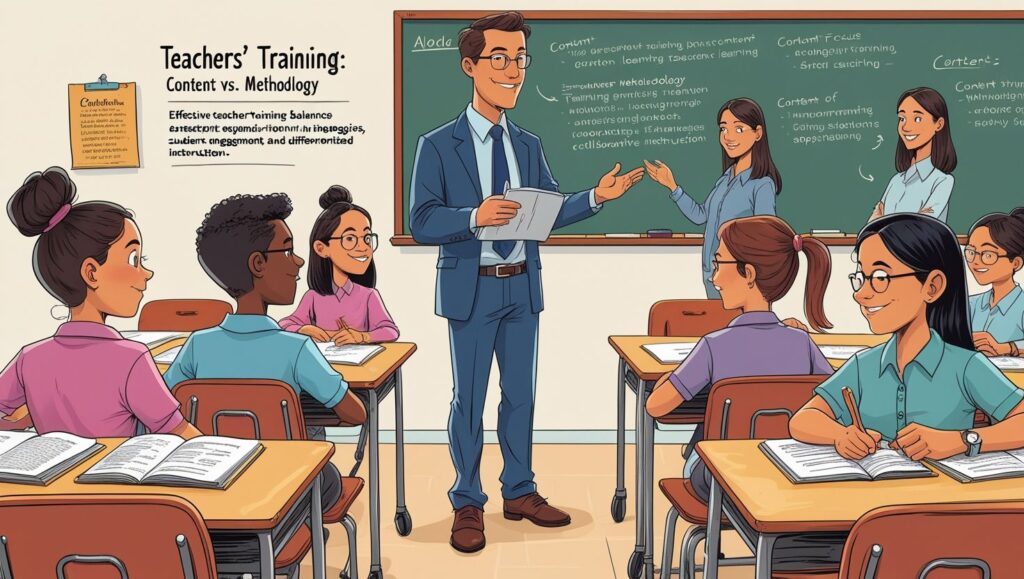
Exploring Teaching Methodology
Teaching methodology is the art of how to teach. It includes strategies, approaches, and techniques that guide the learning process. A good methodology makes learning engaging. It also makes difficult concepts easier. Hence, methodology directly impacts students’ interest and achievement.
There are many teaching methods—lecture, discussion, inquiry-based, project-based, etc. Every method has its strengths. But their success depends on how and when they are used. For example, storytelling may work in literature classes. Conversely, practical experiments may suit science better. Therefore, teacher training must introduce a variety of techniques.
Moreover, teaching methodology is not fixed. It evolves with technology and pedagogy. Digital tools, flipped classrooms, and blended learning are examples of modern methodologies. Hence, regular training helps teachers stay updated. However, methodology alone is not enough. If a teacher uses fancy methods without strong content, learning suffers. Thus, the method must support the content, not overshadow it.
Furthermore, methodology includes understanding student psychology. A trained teacher modifies methods based on students’ needs. This flexibility is vital. Ultimately, methodology is the bridge between content and student comprehension. So, methodology adds life to content. Without it, even the best content becomes boring. Training must, therefore, blend both wisely.
Balancing Content and Methodology in Training
Balancing content and methodology is a challenge many training programs face. Often, the focus leans too much in one direction. This imbalance creates ineffective teachers. Therefore, training models should offer equal attention to both aspects. Firstly, a teacher must know the content deeply. Without subject knowledge, their teaching loses credibility. But if they cannot communicate that knowledge well, students still fail to learn. Hence, methodology must complement content, not compete with it.
Additionally, integrated training can show how to teach a specific topic using suitable methods. For instance, a training session on teaching fractions should include content understanding and activity-based strategies. This dual approach builds both confidence and creativity in teaching. Moreover, real-life classroom scenarios in training help achieve this balance. Role-plays, micro-teaching, and peer feedback provide practical insights. Teachers can then see how content and methodology work together.
Importantly, trainers must be role models. They should demonstrate balanced teaching themselves. This inspires trainees to follow suit. Finally, balanced training prepares teachers for diverse learners. Different students require different methods for the same content. So, only a balanced approach ensures flexibility. In conclusion, content and methodology are not rivals. They are partners. Effective training must reflect this partnership clearly.
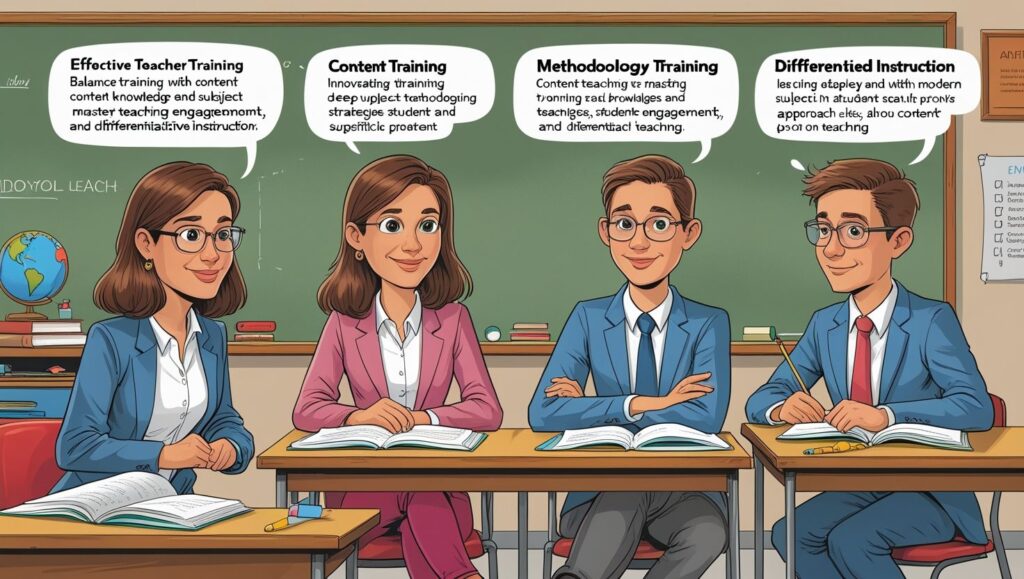
Impact of Content-Focused Training
Content-focused training emphasizes subject depth. It helps teachers master the topics they teach. This approach is highly beneficial in technical subjects like science, math, and computer studies. When teachers know the subject well, students trust them more. Moreover, teachers can answer questions confidently. This builds their authority. They also feel less stressed in the classroom. Because they know the material, they can focus on student needs.
However, content-focused training has limitations. It often ignores how the content should be delivered. Teachers may know what to teach but not how. As a result, lessons may become dull or difficult to follow. Students might lose interest. Furthermore, overemphasis on content may lead to lecture-heavy classes. This can reduce student engagement. Learning becomes one-way. Students do not participate actively.
Also, different learners process information differently. If teachers only focus on content, they may not reach every learner. In diverse classrooms, this becomes a major drawback. Therefore, while content knowledge is crucial, it should not be the only focus. Training must teach teachers how to translate knowledge into student understanding. Only then will learning be meaningful. Hence, content-focused training must be paired with method training for full impact.
Impact of Methodology-Focused Training
Methodology-focused training centers on how to teach. It includes classroom management, lesson planning, questioning techniques, and use of teaching aids. This training creates creative and flexible teachers. They adapt quickly to different classroom situations. Furthermore, methodology training helps teachers engage students better. Lessons become more interactive. Learners become active participants, not passive listeners. As a result, understanding and retention improve.
In addition, such training fosters problem-solving skills. Teachers learn how to handle disruptions, manage time, and assess learning effectively. These skills are vital in modern classrooms. However, focusing only on methods can be risky. A teacher might use creative methods but present wrong or incomplete content. This leads to confusion and misinformation. In such cases, students might enjoy the class but learn little.
Also, methodology training without subject depth can cause over-reliance on teaching aids. Teachers may become dependent on tools rather than content. Moreover, students often ask complex questions. A method-trained but content-weak teacher may struggle to answer. This can harm the teacher’s credibility.
Therefore, methodology must support, not replace, strong content knowledge. Training must ensure that methods are used to deliver accurate information clearly. In short, methodology-focused training is powerful. But it works best when supported by solid content knowledge.
Examples from Successful Training Programs
Many successful training programs balance content and methodology. For instance, Finland’s teacher training emphasizes deep subject knowledge and pedagogical skills. Teachers complete master’s degrees that blend both elements. As a result, Finnish students consistently perform well.
Similarly, Singapore’s teacher education includes structured modules on subject content and methods. Student-teachers must demonstrate competency in both areas before graduation. In Pakistan, the Pre-Service Teacher Education Program (STEP) aimed to integrate pedagogy and content for secondary school teachers. It combined content training with classroom simulations. Teachers practiced lessons under supervision, ensuring practical learning.
Another example is Teach for All, a global initiative. Their model includes intensive induction that teaches both curriculum content and effective strategies. Fellows receive continuous coaching to ensure growth in both domains. In the UK, the Initial Teacher Training (ITT) program combines academic content with school-based teaching practice. Trainees apply their learning in real classrooms.
These examples show that balanced training improves teaching quality. Teachers not only know what to teach but also how to teach it well. Moreover, such training creates lifelong learners among teachers. Therefore, countries aiming to improve education must design balanced training models. Only then can teachers become true agents of change.
Challenges in Implementing Balanced Training
Implementing balanced training is not easy. There are several challenges. Firstly, many teacher training institutes lack qualified trainers. Some trainers are strong in content but weak in pedagogy. Others are method experts but lack deep subject knowledge.
Secondly, time constraints limit the depth of training. Short courses often rush through topics. Teachers cannot master both content and methodology in limited time. This leads to shallow learning. Thirdly, resources are often insufficient. Training materials, digital tools, and demonstration models may be outdated. Without updated resources, training loses relevance.
Moreover, one-size-fits-all training does not work. Different teachers need different types of support. Some need more help in subject matter. Others need help in delivery. However, training programs rarely offer customized learning paths. Also, evaluation of teacher training is weak. Often, there’s no follow-up. Trainers don’t check if teachers apply their learning in real classrooms. Without feedback, improvement stalls.
Additionally, institutional resistance can be an issue. Some schools discourage new methods. They prefer traditional styles. This discourages trained teachers from applying their skills. Finally, budget limitations often reduce the scope of training. Quality suffers due to cost-cutting. Hence, while balanced training is ideal, its success depends on proper planning, support, and monitoring.
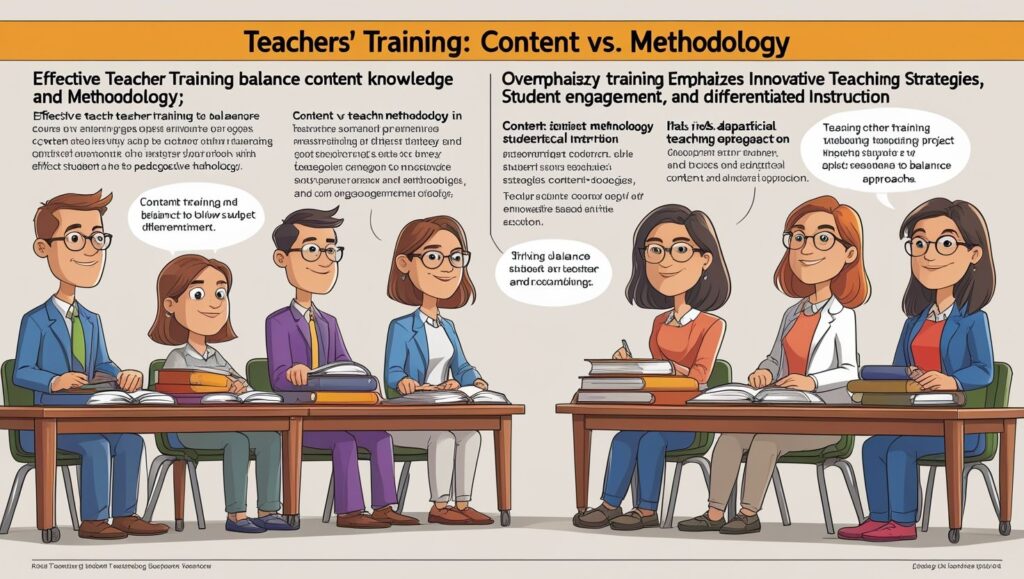
Recommendations for Future Training Programs
To improve teacher training, certain recommendations must be followed. First, training must be designed to integrate content and methodology from the start. This dual approach ensures balanced teacher growth. Secondly, training programs should be longer and more intensive. A few workshops are not enough. Regular, in-depth sessions build real skills. These should include both theory and classroom practice.
Third, trainers must be well-qualified. They should have mastery in both subject and pedagogy. Moreover, they should receive refresher training regularly. Next, training should be need-based. Pre-training assessments can identify what each teacher lacks. This allows for customized modules.
In addition, digital tools must be used. Online platforms can offer blended learning options. These are flexible and cost-effective. Furthermore, practical teaching must be part of every program. Simulations, micro-teaching, and live feedback are crucial. They bridge the gap between theory and classroom realities.
Also, training should include follow-up support. Mentoring, classroom observations, and peer learning help teachers apply their skills. Lastly, governments and schools must support innovation. Teachers should be encouraged to use new methods without fear of criticism. In conclusion, strong policies, proper resources, and consistent evaluation are keys to future training success.
Conclusion
Teachers are the backbone of education. Their effectiveness depends on both what they know and how they teach. Therefore, training must focus equally on teaching content and methodology. Content provides the knowledge. Methodology ensures that knowledge reaches students effectively.
However, training often leans too much on one side. This creates an imbalance. Consequently, students either lose interest or fail to understand. A balanced training model avoids this outcome. Moreover, real success lies in integration. Teachers must be able to switch strategies based on classroom needs. They must know their subject and present it engagingly. This requires ongoing professional development.
Additionally, schools, trainers, and policymakers must work together. Only then can teacher training truly transform education. Ultimately, well-trained teachers build confident learners. They turn classrooms into centers of discovery. They make learning joyful, inclusive, and meaningful. Therefore, content and methodology are not choices. They are partners. When balanced through smart training, they create powerful educators—and successful students.
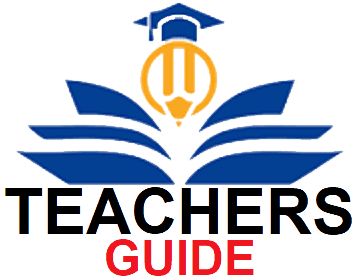
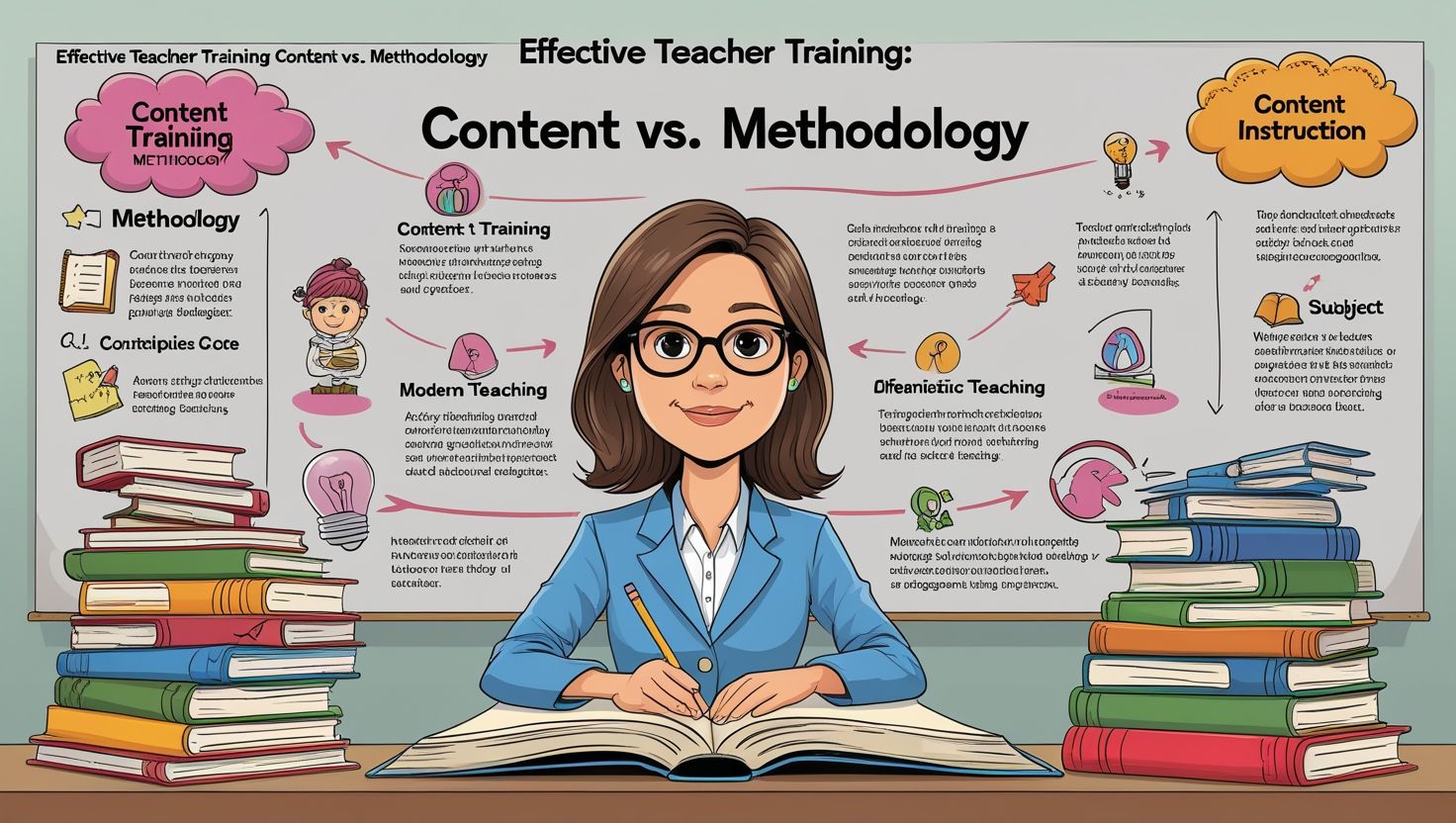
jc7z0w
01alpk
se3c6z